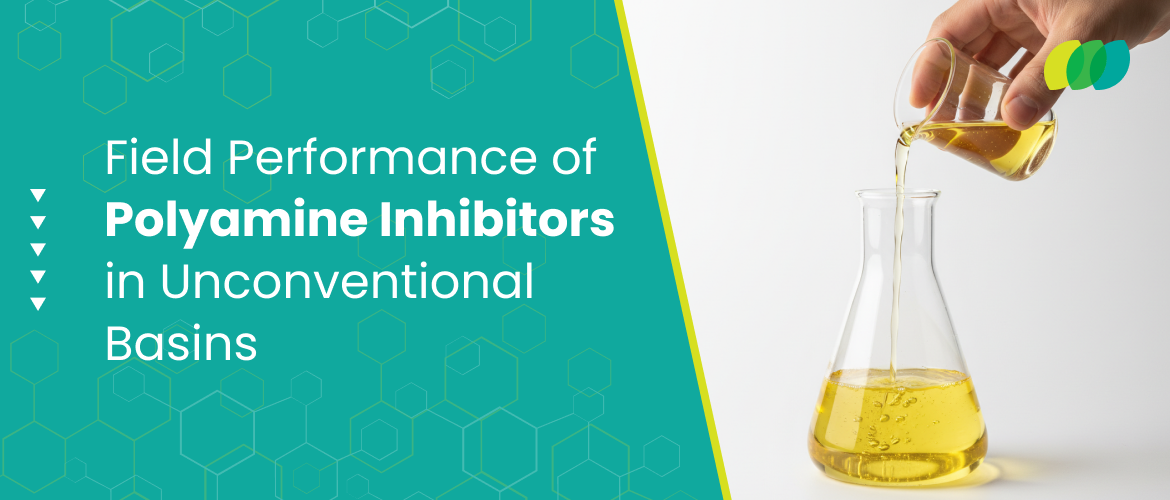Unconventional basins are not simple places to drill. The rock is reactive, the fluids interact differently, and the risks tied to wellbore stability are high.
For operators, the biggest troublemaker is clay swelling. When shales absorb water, they expand, disperse, and block the path forward. What looks like a steady operation can turn into delays and extra costs.
Polyamine inhibitors were developed to handle this. They bind to the clay surface, creating a protective barrier that slows down water uptake. The concept is simple: when shales are exposed to water, they swell. Polyamine inhibitors form a barrier on clay surfaces that slows this process.
The real question is whether these inhibitors deliver results in the field. It concerns whether these inhibitors are really working in the field or not. Decision-makers want proof in results, not chemical equations.
What Makes Polyamine Inhibitors Effective in the Field?
Lab data only tells part of the story. Actual field conditions reveal how these molecules behave under stress.
Field teams report fewer tight-hole events, smoother torque and drag, and reduced downtime. This is because polyamines attach strongly to clay surfaces, offering durable protection.
Flexibility is another strength. Polyamines can be added to water-based muds, brines, or completion fluids without losing effect. By this, they become useful across drilling and completion stages.
Dosage control is critical. Too little reduces protection, while too much can change fluid properties. The right balance is what separates a smooth operation from an expensive mistake.
Applications in the Field
Polyamine inhibitors are mainly used to keep shales stable in water-based muds. They stop clays from swelling and breaking apart.
In completion fluids, they reduce fines migration and limit formation damage. That means cleaner flowback and better well performance.
Their adaptability is a big plus. The same inhibitor can be used in muds, brines, and even workover fluids – one solution across different stages of drilling and completion.
Benefits for Operators
Operators see direct results with polyamines. Drilling operations run more smoothly, with fewer stuck pipe incidents and reduced downtime.
They also cut unplanned trips, which saves both time and cost. Crews can stay focused on progress instead of constant troubleshooting.
On the production side, less formation damage means stronger recovery. For decision-makers, the benefit is clear: reduced risk, lower costs, and more reliable well performance.
The Decision Maker’s Lens
Decision-makers focus less on molecular details and more on risk reduction, cost savings, and long-term well performance.
Polyamines align well with that perspective. They reduce non-productive time, cut down on corrective actions, and help maintain wellbore integrity.
They also reduce the likelihood of operational delays – reduced stuck pipe, reduced sidetrack, and stable wells. Such advantages are weighty in terms of planning and budgets.
And by minimizing formation damage during drilling and completion, they support better hydrocarbon recovery. That means the investment in chemistry pays off later in production.
Performance depends on monitoring and proper mud design. But with the right balance, polyamines bring reliable results in unconventional plays.
A Practical Takeaway
Polyamine inhibitors are not a silver bullet. They will not solve every problem in shale drilling.
But their track record shows consistent value. They keep shales stable, help wells reach target depth, and reduce unexpected downtime.
To decision-makers, it is obvious. Polyamines have been found to be a reliable alternative in the ever-changing reactive shales.

